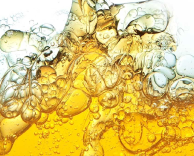Best practices for maintenance of FRF in turbine EHC system
What is a Turbine EH System ?
Electro-Hydraulic Control system (EHC system) of a turbine is the most critical equipment of a
power plant. It’s the heart of a turbine which controls steam flow into the turbine. A
malfunctioning EHC system can lead to turbine stoppage and thereafter create a dominoes effect
on the synchronized processes of the power plant. Breakdown-free and reliable operation of the
EHC system is the biggest challenge of an Operation & Maintenance Manager. To learn more follow:
https://www.linkedin.com/company/minimacsystemsprivatetlimited
Due to high steam pressure & temperature in the vicinity of a steam turbine, as safety compliance, it is a mandate to use Fire Resistant Fluids (FRF) for hydraulic control of the EHC system. A specially designed synthetic fluid called tri-xylenyl phosphate ester demonstrates best fire resistant properties for the application.
Phosphate esters are polar fluids with excellent lubricating properties that can operate under
extreme conditions.
However, phosphate esters require strict control in order to extend their useful lifespan.
Water and Acids de-grade FRF
Phosphate esters (which are being used as FRF in EHC systems) are manufactured under controlled environment through the esterification of phosphoric acid, where water is a by-product.
Phosphoric Acid + Alcohol → Phosphate Ester + Water
Unfortunately, phosphate esters are highly hygroscopic (tendency to absorb water) in nature and the esterification process is reversible when phosphate esters come in contact with water. This is referred to as hydrolysis. The higher the water content and temperature, the faster the ester will break down by hydrolysis.
Phosphate Ester + Water → Phosphoric Acid or Acid Phosphates + Alcohol
Thereby it is recommended to control the water level, temperature, and acidity in FRF of the EHC systems. If uncontrolled, the acidity accelerates rapidly.
TAN value or Total Acid Number (measured in unit mgKOH/gm) is a parameter to denote acid content accumulation in FRF. A high TAN value degrades the fluid rapidly, decreases its viscosity and resistivity. Thereby causing acid corrosion of sensitive servo-valves and other system components of an EH System.
FRF de-gradation due to particles
Water and acid are not the only contaminants which can degrade the FRF.
Since the dynamic oil film and fine clearances in servo-valves are less than 5 micron, even the
finest silt particles and sludge/varnish deposits from fluid degradation can hinder proper
operation. Fine particles get trapped in clearances between the valve plunger and housing. This
abrasive wear is known as seizing or grinding. This can result in wear rates that are a thousand
times greater than anticipated by the valve manufacturer.
Therefore, it only makes sense to use very fine filtration (3-5 micron) for maintaining the EHC
fluid. For any Technical Consultancy Call - +91 89751 50700
Consequences of FRF de-gradation
- Acid, gel and sludge/varnish formation
- Valve sticking or blocking
- Reduced lubricity and film strength
- Corrosion, erosion and abrasion wear
- Reduced fluid resistivity
- Soot generation (entrained air)
- Short fluid life
Condition based monitoring of FRF
It is highly recommended to carry out regular fluid analysis of FRF and identify any
abnormalities in the trend for further preventive actions. Recommended parameter values for FRF:
Parameter unit value
Appearance ASTM colour code clear, < 3
Water content ppm 500
Kinematic Viscosity (@40 0C) cSt 41-45
Acidity (TAN) mgKOH/gm < 0.15
Particle contamination code ISO 4406 15/12
Cleanliness code (NAS-1638) NAS 1638 5
To learn more follow https://www.linkedin.com/company/minimacsystemsprivatetlimited
The Minimac® FRF Re-conditioning System comprises 4 major steps, all packaged carefully in 1 single skid.
- Solid contamination Super-fine Filtration
- Moisture in oil separation by Vacuum Dehydration technology
- TAN reduction by Ion Exchange technique
- EHC system tank moisture removal by Inert Gas Blanketing technique
Would love to have your feedback, experience, query.. Got any question? Ask away!!





